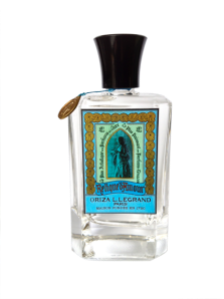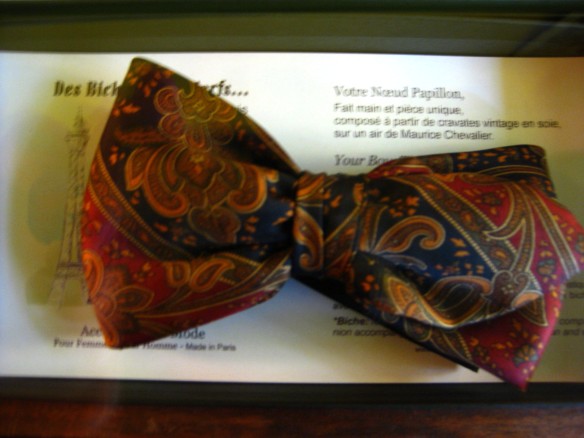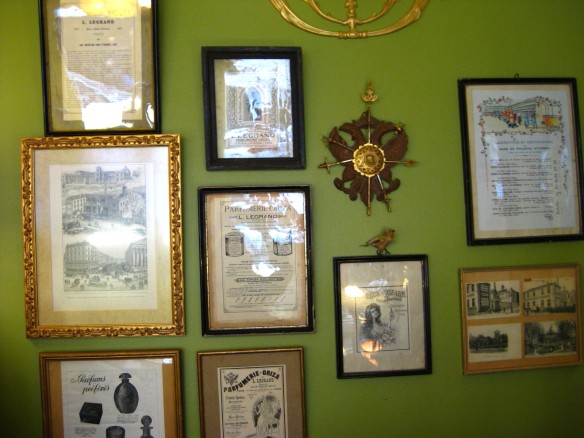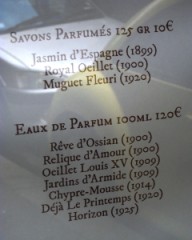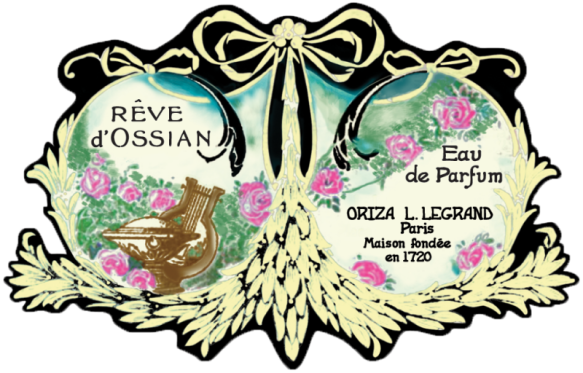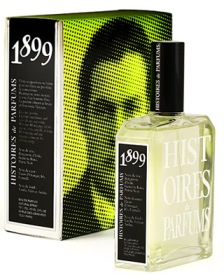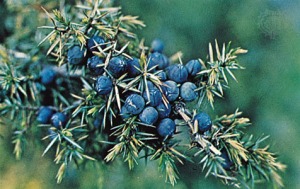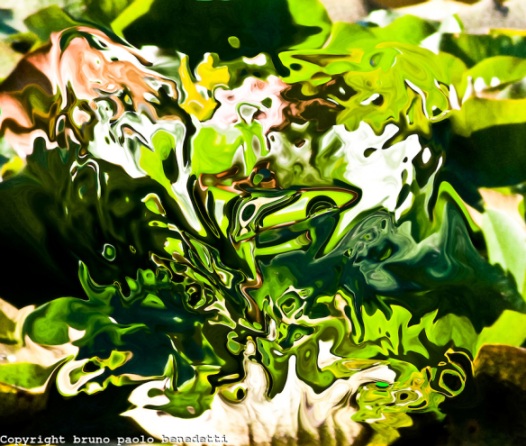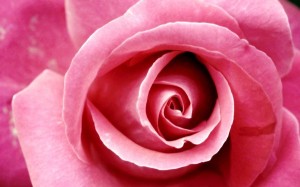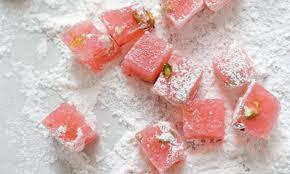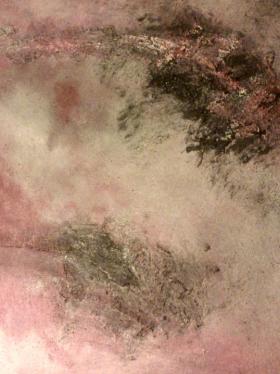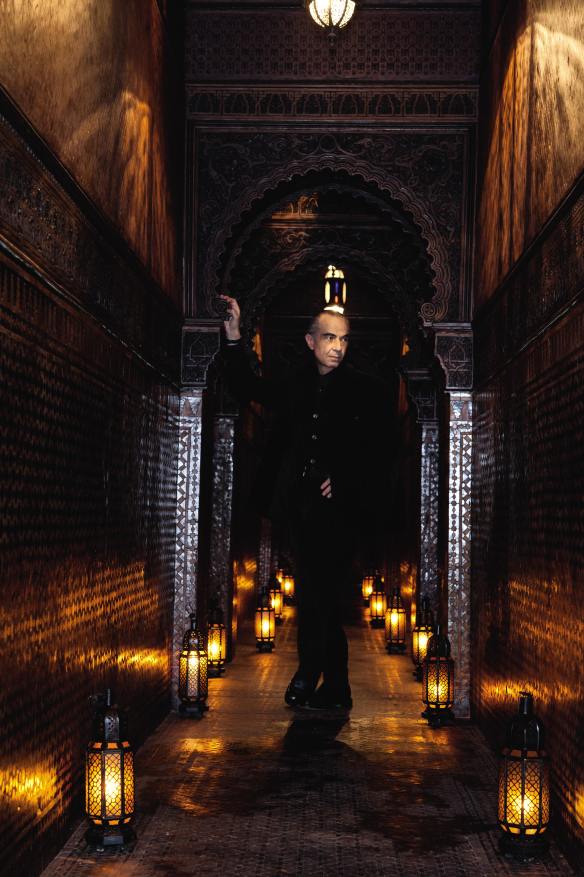When perfumistas with vast, expensive fragrance collections and tastes similar to yours urge you repeatedly to do something because “you’ll love it,” a person tends to listen. Again and again, before my Paris trip, I was told that I had to go to Oriza L. Legrand, not because I am a history fanatic, but because of the sophistication, complexity, depth and elegant luxuriousness of their perfumes.
I’m glad I listened, because I was utterly entranced. The history is fantastic, the boutique utterly adorable and filled with quirky personality, and the perfumes are lovely. In one case, so absolutely incredible that it stopped me in my tracks while on my way to buy my precious bell-jar from Serge Lutens. Those of you who know me (and my feelings about Serge Lutens) will realise that it takes a hell of a lot to make me turn around in my set journey to my perfume mecca — let alone to get distracted enough from Serge Lutens to buy another perfume, then and there, and after a mere 15 minutes!
But that is precisely what happened with Oriza L. Legrand‘s Chypre Mousse, a fragrance that I will review (along with some others from the line) in another post. The funny thing is that I had actually gone to Oriza with plans to investigate a completely different perfume, a patchouli-cognac-amber fragrance called Horizon whose lengthy list of notes had called to me like a siren song. It’s a beautiful patchouli-amber, but, in the end, it could not compare to the utterly haunting, unique loveliness that is Chypre Mousse. To me, Chypre Mousse is the damp, mossy, forest, leafy version of Serge Lutens‘ delicate floral triumph, De Profundis. My fellow blogging friend, Undina, once described De Profundis as a “homage to life,” and I think that beautiful phrase is also the ideal way to describe Chypre Mousse. I mean it quite seriously when I say that I think the perfume is a masterpiece.
I was impressed enough by Oriza L. Legrand (hereinafter just “Oriza“) that I decided to begin my coverage with a little overview of the brand. So this post will address Oriza’s history, its return to the perfume scene, and, at the very end, some of the fragrances that stood out for me. It will also focus on how the perfumes may have changed from their very original formulation. I was lucky to stumble across a superb interview with one of Oriza’s new owners in which he explains how he’s dealt with perfume formulas that go back to 1899 and the early 1900s, the tweaks he’s made in order to offer a slightly modernized version, some very famous fans of the new fragrances, and more.
In addition, I have to include some photos from my own time in the boutique. I loved the time-capsule feel of the store with its vintage posters or adverts from the early 1900s, its quirky collection of bow-ties made from vintage silk, and its brightly coloured window displays. As usual for this trip, my tiny camera wasn’t very cooperative. Nonetheless, I hope it gives you a little sense of what the Oriza boutique is like, especially if you are planning a visit to Paris. At the very end will be a discussion of some of my favorite Oriza perfumes thus far, along with their notes, and an explanation of how you can try the line for yourself.
THE HISTORY:
1720, King Louis XV, and famous beauties. Far before Guerlain, Grossmith, Creed or the like, there was Oriza L. Legrand. The brand originated with Fargeon the Elder who set up his first shop in the Louvre Palace’s central court, and who made a fragrance for the young king. It probably helped Oriza even more that Fargeon’s potions and creams were rumoured to be the secret of Ninon de Lenclos, a great courtesan known for her beauty and eternal youth.

Composite of old Oriza photos and adverts, created by forevergreen.eu .
http://forevergreen.eu/a-fleur-de-peau/reliques-parfumees/
In a 2012 interview with the French blog, Flair Flair, one of Oriza’s current owners, Franck Belaiche, explains both the company’s name and what happened next:
As for the name of the house, it derives from Oryza Sativa, the latin name for rice, which was part of the cosmetics’ ingredients.
Then in 1811, Louis Legrand took over the house as he understood all the potential prestige it had. With its fragrant creations, he pushed it to its full extent. It is him who introduced the perfumes in the house although Fargeon, in his time, had created a fragrance for Louis XV, the young king.
He created the most refined, the most exquisite, the most complex things. Legrand was a true fragrance artist, like the perfumers one encounters in [Patrick Suskind’s book] Le Parfum. […][¶]
[Eventually] Oriza was one of the rare houses that provided the Courts of Russia, England, Italy and France. In France, it lasted until Napoleon 3. The house was also one of the firsts to turn its fragrances into lines of products. It has become the most natural thing now, but it wasn’t back at that time. For Déjà le Printemps, you had a perfume, a powder, make-up, soaps… You see, when I saw the industrial, powerful and innovative aspects of the house, I fell in love right away. I wanted to give it a second birth and give it its prestige back.
At the start of the 1900s, Oriza continued to enjoy success. It participated in the World Fairs, which were very big things back then and one of the rare occasions when the very best artisans, merchants, and luxury lines could present all their wares in one place. In essence, it was a sort of prestigious Olympics.In 1889, Oriza took home the Gold Medal for its perfumes but, in 1900, it received the very top honours with the Grand Prize. I’ve found a photo of the perfume which may have won and which may have been named after Prince Albert, Queen Victoria’s consort.
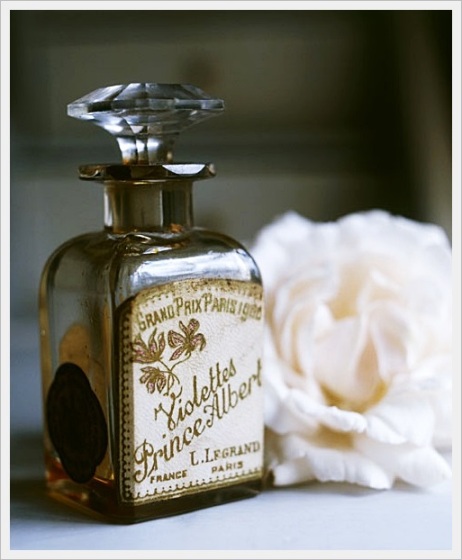
One of the ancient Oriza bottles, in baccarat crystal as many used to be. The name of this one translates to “Violets Prince Albert” and it seems to be the Grand Prize winner at the 1900 World Fair. Source: lylouannephotos.blogspot.com with the photo originally from Flickr.
Then, alas, things came to a crashing halt in the 1930s, and obviously WWII didn’t help matters. The house completely died.
THE RETURN OF ORIZA L. LEGRAND:
Decades later, a perfume lover stumbled across the Oriza name while doing research in a library. It was Franck Belaiche. As he told Flair Flair in the interview linked above, his background was in the movie and television industry, but he loved perfumes. So, he bought the brand with the goal of putting it back on its feet:
I’d spotted Oriza Legrand while doing some research and reading in libraries. Soon, I was fascinated by its story and how it was a precursor of so many things. The house seemed to me like it was one of the creating actors of today’s perfumery. […]
What did you think when you bought it? What did you want to do with it?
I wanted to make it modern while keeping its essence and soul intact. I first had to select, among the 80 fragrances that had been created, which ones were likely to be adapted, reworked from their original formulas, and still be appealing. A good number of them are not easy to wear, especially since Raynaud and the steam extraction technique gave birth to many florals. But there were also a few synthetic molecules which allowed the creation of what we would call today “orientals”. I’ve had to work with the labs to see what we could do based on the formulas and also on the juices, since I have managed to get hold of some old, full bottles. I wanted to get close to the old perfumes while making them modern, without betraying them.So from the beginning you wanted to make these formulas contemporary? It was never about saying “This is exactly what perfume smelled like back then”?
No, and let’s face it, that would have been impossible. First because of the raw materials that we can no longer use, and also because it would have mean making sent-bon (French for smell good). Besides, although these fragrances were high quality, they correspond to a time that is not necessarily ours. With Déjà le Printemps, just like the three others, we are very close to the original, but there is this little something that makes it modern. Careful though, reworking a fragrance does not mean making it attractive to a majority. Right now, I am working on the next two perfumes, which will come out at the end of January.
The whole 2012 interview is fascinating, excellent, and really informative. I urge any of you who may be interested in the technical aspects of how ancient fragrances are brought back to life, to read it in full. It addresses everything from the work process with the laboratory in Grasse and its chemists and perfumers, to the way that perfumes have changed since the time of Louis XV, and the company’s future plans. You can also learn more about Oriza, its current ownership, and the reconstruction of its scents from the lovely Caro of Te de Violetas who interviewed Mr. Belaiche back in September of this year.
One part I found interesting in the Flair Flair interview was Mr. Belaiche’s explanation for why all the new “re-edits” of the original Oriza line pertained to its 1900-era fragrances, instead of the 1720s one. As he explains, it would not have been easy to do a tweaked version of something like Violette du Tsar, a perfume created for the Tsar of Russia. Moreover, “not a lot of people would have enjoyed it, and then starting with old perfumes didn’t seem to me like a relevant way of bringing the house back to life.” (But aren’t you dying to know what that may have smelled like?!) Clearly, Mr. Belaiche is not trying to recreate fragrances merely for the sake of nostalgia and historical curiosity. Instead, he wants to do the house proper justice by making Oriza a viable, current, commercially successful brand with a long-term future. In other words, he’s not trying to create a museum, but a living and breathing house that has a chance of success beyond just the initial curiosity factor.
I met Mr. Belaiche when I went to the Oriza boutique, along with his business partner and fellow Oriza owner, Hugo Lambert. They were both charming and very kind, though Mr. Belaiche seemed to blink a little at the extent of my enthusiastic outbursts over the fragrances and their quality. I don’t think he’s used to someone babbling a thousand words of English a minute, mixed in with French, while sniffing everything, taking photos from every angle, suddenly stopping in their tracks to announce “Aha! Armagnac! This has aged cognac in it!” in response to one fragrance, and being the sort of whirlwind that is rather uncommon to the very restrained French. I hope he took it as the compliment that it is — there are many niche perfume houses these days, I’m extremely hard to please, and I rarely find a brand to have impressively sophisticated, high-quality, original, creative or luxurious offerings almost across the entire line.
I’d like to thank Mr. Belaiche for letting me take photos of the boutique, and I can only apologise to him for my camera taking such poor photos. While I’m at it, I’d also like to thank Mr. Lambert for providing me with a small decant of the beautiful patchouli scent, Horizon, to go with my purchase, even though he had to dig up a long vial from the back. As a side note, I wish I had managed to take photos of all the vintage Oriza posters and adverts framed under glass in the store. They were fascinating, and I’m so glad the new owners have kept the brand’s aesthetic, both in terms of the feel of their boutique and their perfume’s packaging. I’m a complete sucker for Art Deco, so I love Oriza’s brightly coloured labels with the old-style, vintage fonts.
Without further ado, here are a few photos of the Oriza store on rue Saint-Augustin:

Some of the soaps from the Oriza line, along with boxed perfumes wrapped in wonderfully old-fashioned, patterned paper.
THE PERFUMES TODAY:
I think Oriza is going to go places simply because the majority of its perfumes really don’t smell like anything else that I’ve encountered. (Chypre Mousse…. oh, Chypre Mousse!!!) They have the classique feel of fragrances created in decades gone by, much like the very old Guerlains legends. It is a feel that — somehow, I don’t know how — seems miraculously untouched by the impact of IFRA. Like Sleeping Beauties put to sleep in 1900 and awakened today, the Oriza fragrances have body, layers of notes, a very rich, concentrated feel, and the elegant signature of something that is both very French and very “perfume.”
That said, I don’t think the perfumes are generally something that a novice perfumista with commercial tastes would relate to very well. These are not scents that someone used to Estée Lauder‘s Beautiful or Viktor & Rolf‘s Flowerbomb would understand. I think that perfumistas whose tastes skew towards uncomplicated, light, clean, and wispy scents would also struggle a little. None of the Oriza fragrances that I’ve tried thus far would qualify as “wispy” or simple — thank God. They’re nothing like the By Kilian‘s with their largely straightforward, basic nature, or sometimes gourmand fruitiness. They’re too purely French to be like an Amouage or a Neela Vermeire, though they sometimes share both those house’s opulent sophistication. They’re full-bodied and with a vintage feel in terms of both their potent richness, their complexity, and their sophistication. If you like the early Guerlains, the complicated originality of some Serge Lutens creations, or the sophisticated weight of Roja Dove’s fragrances, then Oriza L. Legrand will be for you.
Thus far, Oriza has seven “returned” fragrances. The list of the eau de parfums with their original date of creation:
- Relique D’Amour (1900)
- Rêve d’Ossian (1900) -(Fragrantica gives a different debut date for Reve d’Ossian which it lists as a 1905 creation, but I’m going by what was listed in Oriza’s own shop window in Paris.)
- Oeillet Louis XV (1909)
- Jardins d’Armide (1909)
- Chypre Mousse (1914) (Fragrantica incorrectly states that this one is from 1920.)
- Déjà Le Printemps (1920)
- Horizon (1925).
Though I haven’t finished testing the whole line yet, the ones I have loved the most thus far have been three. Chypre Mousse wins, hands down and by a landslide, as one of the most fascinating, haunting, evocative chypres I’ve smelled in ages. It is then followed with Horizon and Reve d’Ossian in a neck-and-neck position. The florals that I’ve briefly and cursorily tested thus far have sometimes smelled dated to me, though generally not in a bad way. Only one of those triggered a strongly negative reaction: Jardins d’Armide, which felt too painfully difficult and old-fashioned with its heavy powder and its soapy feel. However, my perception has to be put in the context of one who dislikes powdery scents, and who loathes anything soapy, even expensive floral soap!
So, what are the notes in some of my favorites? Oriza provides the following details for my top 3:
- Top Notes tonic & balsamic: Wild mint, clary sage, wild fennel & green shoots.
- Heart notes aromatic & flowing properties: Oakmoss, Galbanum, Angelica, fern, wild clover, Mastic & Violet leaves.
- Backgrounds Notes mossy & leathery: Vetiver, Pine Needles, Oak Moss, Mushroom fresh Humus, Roasted Chestnut Leather, labdanum & Balms.
- Top Notes: Frankincense and Pine woods.
- Heart Notes: Cinnamon, Benzoin, Tonka Bean and Opopanax [sweet myrrh].
- Base Notes: Tolu Balm, Sandalwood, Leather, Labdanum, Amber and Musks.
- Top Notes: Bitter orange, Tangerine Confit & Dried Rose.
- Heart Notes: Cognac Amber, Aromatic Tobacco Leaves, Cocoa, Roasted Almonds, Old Oak & Patchouli.
- Base Notes: Benzoin, Amber Gray [ambergris], Peat, Tabac Blond, Vanilla, Honey & Soft Leather.
One thing that I need to emphasize about many of these note lists is that I don’t think they accurately convey the real nature of the fragrances. One reason is that the perfumes are superbly blended and a bit linear, so that you often get an overall effect, rather than a detailed, distinctive sense of each of their parts. For another, something about many of these fragrances is… well, for lack of a better term, other-worldly. I’ll be honest and say that one reason why I’ve put off reviewing Chypre Mousse is that I’m not sure I could even BEGIN to describe it properly and in-depth. I’m not one who is usually at a loss for descriptors or olfactory adjectives, but Chypre Mousse may be beyond my abilities. The smell is simply like nothing I’ve encountered.
Given how many of the perfumes really are a “sum total” effect due to their seamless, fluid, often linear structure, I fear I’m merely going to have to give descriptive snippets of each. At times, my account may amount to instinctive abstractions, as in the case of Relique d’Amour:
- Top notes: Fresh Herbs, Pine.
- Middle notes: Powdery Notes, White Lily, Pepper, Oak, Incense, Myrrh, Elemi.
- Base notes: Musk, Moss, Waxed Wood, Woody Notes, Pepper.
Oriza describes it as “the smell of an old chapel of Cistercian abbey.” I think that gives a misleading impression of the perfume, as do the notes themselves. It is far from a dusty, cold, dark, foresty, woody, High Church olibanum/myrrh scent. To me, it’s a very complex, unusual, quite twisted take on a lily scent that actually feels like a Serge Lutens, only very old in nature. Relique d’Amour is different, original, and stands out a mile away — and it won’t be easy to summarize it in the upcoming review. [UPDATE 11/6 — You can find my reviews of the full Oriza line at the following links: Chypre Mousse, Horizon and Reve d’Ossian in one post; and the 4 remaining, largely floral fragrances in this second post.]
All in all, I think Oriza L. Legrand is a line that is definitely worth exploring. Though there are no U.S. retailers (yet), it’s easy to order directly from the company. In addition to the full bottles of the perfumes, they offer a sample set of the complete line. It’s quite inexpensive at €9 for 7 fragrances that come in 2 ml vials, thereby giving you quite a few test wearings. I think it’s well worth the minimal cost, and I believe Oriza ships the samples world-wide. If you’d like to sniff very elegant, very French, perfumed Sleeping Beauties, brought back to life after more than a century and in a largely unchanged form, give Oriza a try.




